Need ideas for old stone barn foundation-Pics
kim_dirtdigger
16 years ago
Featured Answer
Comments (33)
laag
16 years agolast modified: 9 years agokim_dirtdigger
16 years agolast modified: 9 years agoRelated Discussions
Need help with foundation plantings in front of old house
Comments (20)Just a comment on the north facing situation. It's the back of my house that faces due north. I'm in zone 6, which for me means very hot summers and winters with bitter cold, and cycles of snow - ice - thaw that can be plant killers. Throw in prairie winds out of the west and it's no fun right now. But my absolute favorite planting bed is a 9' x 20' border snugged up against the back of the house beside my back patio. I understand what you mean about the intense light in summer, but there may be a trick to it that will help you decide about what you will plant. I've watched how the shade line moves back toward the house as we move from spring up to the summer solstice (about June 21). At that point the shade line is about as close as it will get to the house itself. For me, there's a 3 ft band that is always in the shade. I don't plant that close to the house, but I do plant near that 3 ft mark. Those plants have access to growing some of their roots toward the shade. Plus the plants nearest the house are shaded through the days of the spring when the tilt of the earth thingy is moving that shade line. Anything closer to the house also gets the reprieve from the sun soonest as the shade line moves back in the other direction further and further from the house. In other words around the spring equinox (about March 21) the house shades an area extending beyond the bed and the patio. At that point everything is in complete shade and the plants are coaxed up from the ground by the warming earth and gentle ambient light. Tulips, daffodils, hyacinths poke up a little later here because they are kept cooler in the shade. Right at the sweet spot (about 5 ft from the house in my situation) a gorgeously robust clematis is beginning to need a little more space. It usually blooms long and then blooms again in the fall. So far I mostly have shade plants in this entire bed in spite of the fact that I know the afternoon light is coming. Kept watered, and tended, and mulched, I have been amazed at how well these shade prefering plants do. But ... I think it helps that as the earth's tilt again shifts the light southward, the shade in this area slowly begins to give its reprieve to these plants. I once used this bed for vegies ... just to see how that would go ... and the things that really love light to do well and are harvested in Aug and later, didn't produce much once they were tucked under the growing edge of the shade. Your situation is different, so you'll have to watch the light. On a sunny day in January the north side of my house is gloomy and significantly colder. The south side is the brighter warmer side. Anyway, my point is that you can work with this exposure and expect good results. There are all kinds of ways to create shade protection. A stepping stone in just the right spot is incredibly effective for keeping the ground moist and cool near a plant. I sometimes use that technique in addition to plenty of mulch. I love my north side beds and was actually planning to add hydrangia to my little playground in back. Wellspring...See MoreFoundation and front bed ideas PIC
Comments (17)OK, I'm getting the sense that you're not really all that interested in landscape design, as most of the advice above doesn't seem to have influenced what you've done, and that's OK - it's your house. You just wanted advice on plant selection for a foundation planting. Most of us don't like doing plant selection advice because beginners don't learn anything about gardening or landscaping when someone who learned it the hard way just tells them to put Plant A into Spot B. Most of us are just people who learned it the hard way and want to ease the learning curve a bit for others - not to save them the trouble of learning. But you want feedback from the design forum... well, you might not like it, but here goes. Deciduous and herbaceous plants have a role to play in any garden, of course, as they provide colour and all sorts of seasonal interest, but they have little or no impact from a landscape design standpoint as they essentially disappear or look like a bundle of sticks in winter. Good layout of a garden, including foundation planting, almost always starts with a backbone of evergreen plants to frame and provide context for more seasonal plantings. If I can see correctly, you have exactly one evergreen plant, and that one is an alberta spruce planted precisely where most of us suggested you not plant anything (and where I think it will get only shade, and die) and in a terribly geometric spot in an otherwise non-geometric setting. Alberta spruce makes most landscape-sensitive people go "gaaaaak!" because it is so common and so... commonplace. Search the forum for old threads if you want to know why. But if you must have one, and they can be cute when young, it needs a family. Putting the poor thing out there alone is like having one pink flamingo. A grouping looks witty, but a single looks tacky. Find a few other evergreens that offer a variety of leaf shape, plant shape, and size, and plant the Alberta in a grouping with them off the left corner of your house, similar to what has been done on the right corner by previous owners (though it's uniform there; on the other side some variety of shape would be good). You seem determined to cover up that lovely brickwork no matter what anyone says. But a single sore thumb plant up the middle looks like... a sore thumb. Honestly, that area needs just a low cushiony effect to soften the foundation, not a spire. Think about what you need as being a wave of plants with a crest somewhere off-centre between the windows, but nothing so brutally upright. That hydrangea might actually be good there, if it's kept trimmed, as it would allow the brickwork to shine in winter. There is absolutely nothing wrong with wanting curb appeal; we all do. But I think the objective is to improve the look of the house, not just to encircle it with random plants, which can have the absolutely opposite effect. KarinL...See MoreNeed feeback for landscaping an old barn foundation
Comments (2)I think it could be beautiful to treat it as a 'ruin'. With vines growing up, a secluded place to go. Put some wrought iron table and chairs on the foundation and it could be a romantic get-away place for you and your SO. Or, a great place for the children to play hop-scotch. If you're looking to save it, vines may not be the best choice. In that case, I would mow around it and plant native wildflowers. Tons of them. And native grasses, so you won't have to mow but perhaps once or twice a year. It depends on what you want to do with this barn, and what would look best with your home. So many possibilities!...See MoreNeed help with Stone Foundation issues!
Comments (3)You have to rerun spouts get water away from house,then have the foundation repointed.Ours wast too bad as we have rock laying everywhere up here.We gathered rock so where some needed replaced we had it there for masons....See Morenaplesgardener
16 years agolast modified: 9 years agowoodyoak zone 5 southern Ont., Canada
16 years agolast modified: 9 years agonandina
16 years agolast modified: 9 years agokim_dirtdigger
16 years agolast modified: 9 years agoSaypoint zone 6 CT
16 years agolast modified: 9 years agowoodyoak zone 5 southern Ont., Canada
16 years agolast modified: 9 years agonandina
16 years agolast modified: 9 years agoironbelly1
16 years agolast modified: 9 years agoironbelly1
16 years agolast modified: 9 years agocatkim
16 years agolast modified: 9 years agokarinl
16 years agolast modified: 9 years agomuddydogs
16 years agolast modified: 9 years agomadtripper
16 years agolast modified: 9 years agocrunchpa
16 years agolast modified: 9 years agowellspring
16 years agolast modified: 9 years agoisabella__MA
16 years agolast modified: 9 years agoironbelly1
16 years agolast modified: 9 years agokim_dirtdigger
16 years agolast modified: 9 years agoannzgw
16 years agolast modified: 9 years agorhodium
16 years agolast modified: 9 years agoFrankie_in_zone_7
16 years agolast modified: 9 years agomad_gallica (z5 Eastern NY)
16 years agolast modified: 9 years agolandart
16 years agolast modified: 9 years agokim_dirtdigger
16 years agolast modified: 9 years agomadtripper
16 years agolast modified: 9 years agolandart
16 years agolast modified: 9 years agopat4750
16 years agolast modified: 9 years agomad_gallica (z5 Eastern NY)
16 years agolast modified: 9 years agonandina
16 years agolast modified: 9 years agomsjay2u
16 years agolast modified: 9 years ago
Related Stories
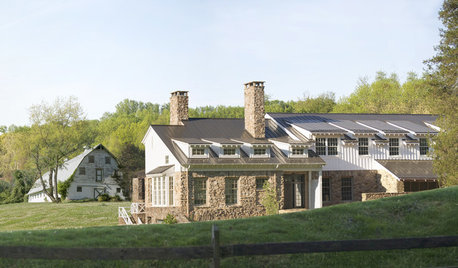
FARMHOUSESHouzz Tour: An Old Barn Inspires a Gracious New Home
Graceful and elegant, this spacious home in the Virginia countryside takes farmhouse style up a notch
Full Story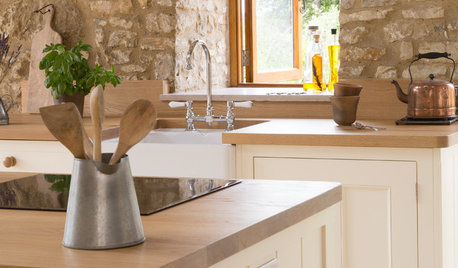
KITCHEN DESIGNHistoric Stone Barn Now a Country Farmhouse Kitchen
A designer carves out a cooking and dining space while carefully preserving the protected 17th-century structure
Full Story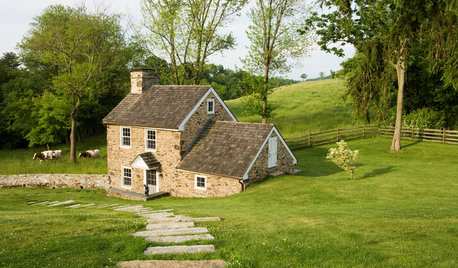
BEFORE AND AFTERSRestoration Rallies a 1790 Stone Springhouse
An old outbuilding gets a new purpose — several purposes, that is — thanks to careful efforts by stonemasons and architects
Full Story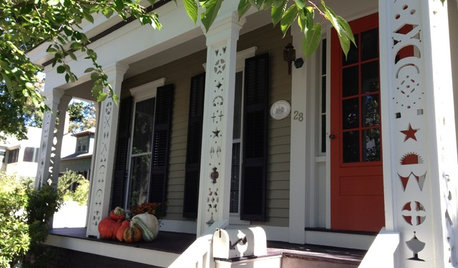
LIFEAge Is Just a Number: Houzzers’ Homes Old and New
Hear the stories behind homes ages 1 to 171, then share yours
Full Story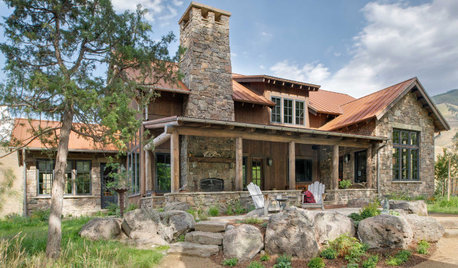
LANDSCAPE DESIGNHow to Make Your Stone House Feel at Home in the Landscape
The right gate, walkway, garden furniture and, of course, plantings can help make the connection
Full Story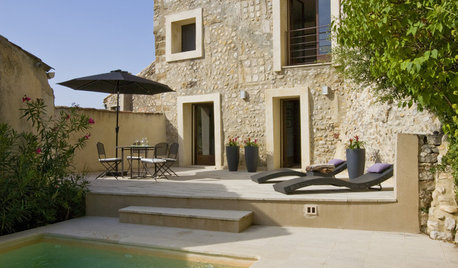
MODERN HOMESHouzz Tour: 800-Year-Old Walls, Modern Interiors in Provence
Old architecture and new additions mix beautifully in a luxurious renovated vacation home
Full Story
DECORATING PROJECTSWhat to Do With Old Family Photos
Find out how to research, share and preserve images that offer a connection to the past
Full Story
REMODELING GUIDESThe Hidden Problems in Old Houses
Before snatching up an old home, get to know what you’re in for by understanding the potential horrors that lurk below the surface
Full Story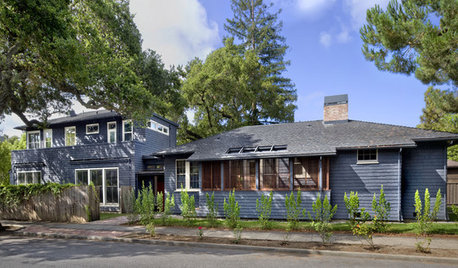
ARCHITECTUREStyle Divide: How to Treat Additions to Old Homes?
One side says re-create the past; the other wants unabashedly modern. Weigh in on additions style here
Full Story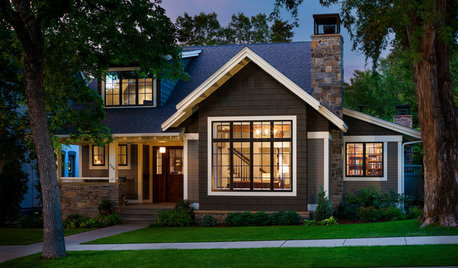
TRANSITIONAL HOMESHouzz Tour: Embracing Old and New in a Montana Bungalow
This home’s exterior fits the historic neighborhood, but its new, more modern floor plan fits the owners’ lifestyle
Full Story


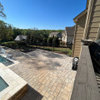

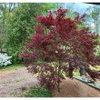

duluthinbloomz4